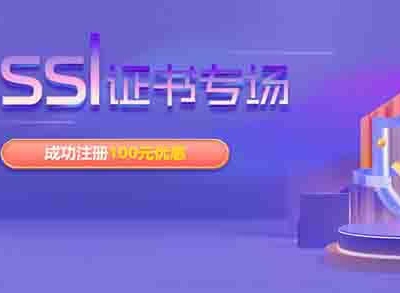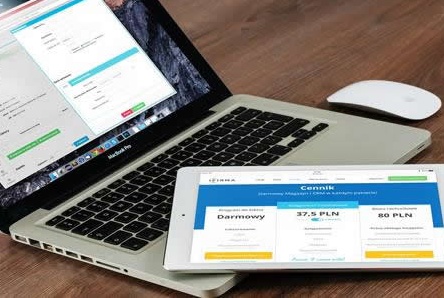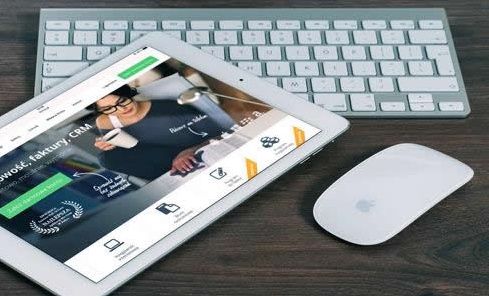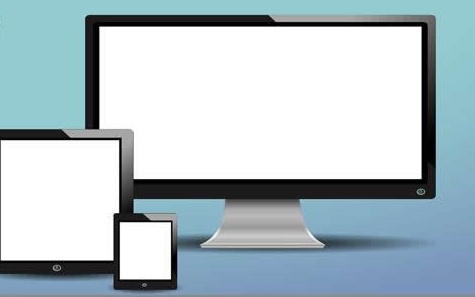Open3D显示中文
- 其他
- 2025-09-22 09:39:01

Open3D显示中文 1. 相关的类 1. open3d.visualization.gui.Application设置字体 2. open3d.visualization.gui.FontDescription字体类 2. 使用
参考官方文档: .open3d.org/docs/release/python_example/visualization/index.html#non-english-py
2.1 注意如果不使用zh_all可能还是不能显示常用的汉字 # ---------------------------------------------------------------------------- # - Open3D: .open3d.org - # ---------------------------------------------------------------------------- # Copyright (c) 2018-2024 .open3d.org # SPDX-License-Identifier: MIT # ---------------------------------------------------------------------------- import open3d.visualization.gui as gui import os.path import platform basedir = os.path.dirname(os.path.realpath(__file__)) # This is all-widgets.py with some modifications for non-English languages. # Please see all-widgets.py for usage of the GUI widgets MODE_SERIF = "serif" MODE_COMMON_HANYU = "common" MODE_SERIF_AND_COMMON_HANYU = "serif+common" MODE_COMMON_HANYU_EN = "hanyu_en+common" MODE_ALL_HANYU = "all" MODE_CUSTOM_CHARS = "custom" #mode = MODE_SERIF #mode = MODE_COMMON_HANYU # mode = MODE_SERIF_AND_COMMON_HANYU mode = MODE_ALL_HANYU #mode = MODE_CUSTOM_CHARS # Fonts can be names or paths if platform.system() == "Darwin": serif = "Times New Roman" hanzi = "STHeiti Light" chess = "/System/Library/Fonts/Apple Symbols.ttf" elif platform.system() == "Windows": # it is necessary to specify paths on Windows since it stores its fonts # with a cryptic name, so font name searches do not work on Windows serif = "c:/windows/fonts/times.ttf" # Times New Roman hanzi = "c:/windows/fonts/msyh.ttc" # YaHei UI chess = "c:/windows/fonts/seguisym.ttf" # Segoe UI Symbol else: # Assumes Ubuntu 20.04 serif = "DejaVuSerif" hanzi = "NotoSansCJK" chess = "/usr/share/fonts/truetype/freefont/FreeSerif.ttf" def main(): gui.Application.instance.initialize() # Font changes must be done after initialization but before creating # a window. # MODE_SERIF changes the English font; Chinese will not be displayed font = None if mode == MODE_SERIF: font = gui.FontDescription(serif) # MODE_COMMON_HANYU uses the default English font and adds common Chinese elif mode == MODE_COMMON_HANYU: font = gui.FontDescription() font.add_typeface_for_language(hanzi, "zh") # MODE_SERIF_AND_COMMON_HANYU uses a serif English font and adds common # Chinese characters elif mode == MODE_SERIF_AND_COMMON_HANYU: font = gui.FontDescription(serif) font.add_typeface_for_language(hanzi, "zh") # MODE_COMMON_HANYU_EN the Chinese font for both English and the common # characters elif mode == MODE_COMMON_HANYU_EN: font = gui.FontDescription(hanzi) font.add_typeface_for_language(hanzi, "zh") # MODE_ALL_HANYU uses the default English font but includes all the Chinese # characters (which uses a substantial amount of memory) elif mode == MODE_ALL_HANYU: font = gui.FontDescription() font.add_typeface_for_language(hanzi, "zh_all") elif mode == MODE_CUSTOM_CHARS: range = [0x2654, 0x2655, 0x2656, 0x2657, 0x2658, 0x2659] font = gui.FontDescription() font.add_typeface_for_code_points(chess, range) if font is not None: gui.Application.instance.set_font(gui.Application.DEFAULT_FONT_ID, font) w = ExampleWindow() gui.Application.instance.run() class ExampleWindow: MENU_CHECKABLE = 1 MENU_DISABLED = 2 MENU_QUIT = 3 def __init__(self): self.window = gui.Application.instance.create_window("Test", 400, 768) # self.window = gui.Application.instance.create_window("Test", 400, 768, # x=50, y=100) w = self.window # for more concise code # Rather than specifying sizes in pixels, which may vary in size based # on the monitor, especially on macOS which has 220 dpi monitors, use # the em-size. This way sizings will be proportional to the font size, # which will create a more visually consistent size across platforms. em = w.theme.font_size # Widgets are laid out in layouts: gui.Horiz, gui.Vert, # gui.CollapsableVert, and gui.VGrid. By nesting the layouts we can # achieve complex designs. Usually we use a vertical layout as the # topmost widget, since widgets tend to be organized from top to bottom. # Within that, we usually have a series of horizontal layouts for each # row. layout = gui.Vert(0, gui.Margins(0.5 * em, 0.5 * em, 0.5 * em, 0.5 * em)) # Create the menu. The menu is global (because the macOS menu is global), # so only create it once. if gui.Application.instance.menubar is None: menubar = gui.Menu() test_menu = gui.Menu() test_menu.add_item("An option", ExampleWindow.MENU_CHECKABLE) test_menu.set_checked(ExampleWindow.MENU_CHECKABLE, True) test_menu.add_item("Unavailable feature", ExampleWindow.MENU_DISABLED) test_menu.set_enabled(ExampleWindow.MENU_DISABLED, False) test_menu.add_separator() test_menu.add_item("Quit", ExampleWindow.MENU_QUIT) # On macOS the first menu item is the application menu item and will # always be the name of the application (probably "Python"), # regardless of what you pass in here. The application menu is # typically where About..., Preferences..., and Quit go. menubar.add_menu("Test", test_menu) gui.Application.instance.menubar = menubar # Each window needs to know what to do with the menu items, so we need # to tell the window how to handle menu items. w.set_on_menu_item_activated(ExampleWindow.MENU_CHECKABLE, self._on_menu_checkable) w.set_on_menu_item_activated(ExampleWindow.MENU_QUIT, self._on_menu_quit) # Create a file-chooser widget. One part will be a text edit widget for # the filename and clicking on the button will let the user choose using # the file dialog. self._fileedit = gui.TextEdit() filedlgbutton = gui.Button("...") filedlgbutton.horizontal_padding_em = 0.5 filedlgbutton.vertical_padding_em = 0 filedlgbutton.set_on_clicked(self._on_filedlg_button) # (Create the horizontal widget for the row. This will make sure the # text editor takes up as much space as it can.) fileedit_layout = gui.Horiz() fileedit_layout.add_child(gui.Label("Model file")) fileedit_layout.add_child(self._fileedit) fileedit_layout.add_fixed(0.25 * em) fileedit_layout.add_child(filedlgbutton) # add to the top-level (vertical) layout layout.add_child(fileedit_layout) # Create a collapsible vertical widget, which takes up enough vertical # space for all its children when open, but only enough for text when # closed. This is useful for property pages, so the user can hide sets # of properties they rarely use. All layouts take a spacing parameter, # which is the spacinging between items in the widget, and a margins # parameter, which specifies the spacing of the left, top, right, # bottom margins. (This acts like the 'padding' property in CSS.) collapse = gui.CollapsableVert("Widgets", 0.33 * em, gui.Margins(em, 0, 0, 0)) if mode == MODE_CUSTOM_CHARS: self._label = gui.Label("♔♕♖♗♘♙") elif mode == MODE_ALL_HANYU: self._label = gui.Label("天地玄黃,宇宙洪荒。日月盈昃,辰宿列張。") else: self._label = gui.Label("锄禾日当午,汗滴禾下土。谁知盘中餐,粒粒皆辛苦。") self._label.text_color = gui.Color(1.0, 0.5, 0.0) collapse.add_child(self._label) # Create a checkbox. Checking or unchecking would usually be used to set # a binary property, but in this case it will show a simple message box, # which illustrates how to create simple dialogs. cb = gui.Checkbox("Enable some really cool effect") cb.set_on_checked(self._on_cb) # set the callback function collapse.add_child(cb) # Create a color editor. We will change the color of the orange label # above when the color changes. color = gui.ColorEdit() color.color_value = self._label.text_color color.set_on_value_changed(self._on_color) collapse.add_child(color) # This is a combobox, nothing fancy here, just set a simple function to # handle the user selecting an item. combo = gui.Combobox() combo.add_item("Show point labels") combo.add_item("Show point velocity") combo.add_item("Show bounding boxes") combo.set_on_selection_changed(self._on_combo) collapse.add_child(combo) # Add a simple image logo = gui.ImageWidget(basedir + "/icon-32.png") collapse.add_child(logo) # Add a list of items lv = gui.ListView() lv.set_items(["Ground", "Trees", "Buildings" "Cars", "People"]) lv.selected_index = lv.selected_index + 2 # initially is -1, so now 1 lv.set_on_selection_changed(self._on_list) collapse.add_child(lv) # Add a tree view tree = gui.TreeView() tree.add_text_item(tree.get_root_item(), "Camera") geo_id = tree.add_text_item(tree.get_root_item(), "Geometries") mesh_id = tree.add_text_item(geo_id, "Mesh") tree.add_text_item(mesh_id, "Triangles") tree.add_text_item(mesh_id, "Albedo texture") tree.add_text_item(mesh_id, "Normal map") points_id = tree.add_text_item(geo_id, "Points") tree.can_select_items_with_children = True tree.set_on_selection_changed(self._on_tree) # does not call on_selection_changed: user did not change selection tree.selected_item = points_id collapse.add_child(tree) # Add two number editors, one for integers and one for floating point # Number editor can clamp numbers to a range, although this is more # useful for integers than for floating point. intedit = gui.NumberEdit(gui.NumberEdit.INT) intedit.int_value = 0 intedit.set_limits(1, 19) # value coerced to 1 intedit.int_value = intedit.int_value + 2 # value should be 3 doubleedit = gui.NumberEdit(gui.NumberEdit.DOUBLE) numlayout = gui.Horiz() numlayout.add_child(gui.Label("int")) numlayout.add_child(intedit) numlayout.add_fixed(em) # manual spacing (could set it in Horiz() ctor) numlayout.add_child(gui.Label("double")) numlayout.add_child(doubleedit) collapse.add_child(numlayout) # Create a progress bar. It ranges from 0.0 to 1.0. self._progress = gui.ProgressBar() self._progress.value = 0.25 # 25% complete self._progress.value = self._progress.value + 0.08 # 0.25 + 0.08 = 33% prog_layout = gui.Horiz(em) prog_layout.add_child(gui.Label("Progress...")) prog_layout.add_child(self._progress) collapse.add_child(prog_layout) # Create a slider. It acts very similar to NumberEdit except that the # user moves a slider and cannot type the number. slider = gui.Slider(gui.Slider.INT) slider.set_limits(5, 13) slider.set_on_value_changed(self._on_slider) collapse.add_child(slider) # Create a text editor. The placeholder text (if not empty) will be # displayed when there is no text, as concise help, or visible tooltip. tedit = gui.TextEdit() tedit.placeholder_text = "Edit me some text here" # on_text_changed fires whenever the user changes the text (but not if # the text_value property is assigned to). tedit.set_on_text_changed(self._on_text_changed) # on_value_changed fires whenever the user signals that they are finished # editing the text, either by pressing return or by clicking outside of # the text editor, thus losing text focus. tedit.set_on_value_changed(self._on_value_changed) collapse.add_child(tedit) # Create a widget for showing/editing a 3D vector vedit = gui.VectorEdit() vedit.vector_value = [1, 2, 3] vedit.set_on_value_changed(self._on_vedit) collapse.add_child(vedit) # Create a VGrid layout. This layout specifies the number of columns # (two, in this case), and will place the first child in the first # column, the second in the second, the third in the first, the fourth # in the second, etc. # So: # 2 cols 3 cols 4 cols # | 1 | 2 | | 1 | 2 | 3 | | 1 | 2 | 3 | 4 | # | 3 | 4 | | 4 | 5 | 6 | | 5 | 6 | 7 | 8 | # | 5 | 6 | | 7 | 8 | 9 | | 9 | 10 | 11 | 12 | # | ... | | ... | | ... | vgrid = gui.VGrid(2) vgrid.add_child(gui.Label("Trees")) vgrid.add_child(gui.Label("12 items")) vgrid.add_child(gui.Label("People")) vgrid.add_child(gui.Label("2 (93% certainty)")) vgrid.add_child(gui.Label("Cars")) vgrid.add_child(gui.Label("5 (87% certainty)")) collapse.add_child(vgrid) # Create a tab control. This is really a set of N layouts on top of each # other, but with only one selected. tabs = gui.TabControl() tab1 = gui.Vert() tab1.add_child(gui.Checkbox("Enable option 1")) tab1.add_child(gui.Checkbox("Enable option 2")) tab1.add_child(gui.Checkbox("Enable option 3")) tabs.add_tab("Options", tab1) tab2 = gui.Vert() tab2.add_child(gui.Label("No plugins detected")) tab2.add_stretch() tabs.add_tab("Plugins", tab2) collapse.add_child(tabs) # Quit button. (Typically this is a menu item) button_layout = gui.Horiz() ok_button = gui.Button("Ok") ok_button.set_on_clicked(self._on_ok) button_layout.add_stretch() button_layout.add_child(ok_button) layout.add_child(collapse) layout.add_child(button_layout) # We're done, set the window's layout w.add_child(layout) def _on_filedlg_button(self): filedlg = gui.FileDialog(gui.FileDialog.OPEN, "Select file", self.window.theme) filedlg.add_filter(".obj .ply .stl", "Triangle mesh (.obj, .ply, .stl)") filedlg.add_filter("", "All files") filedlg.set_on_cancel(self._on_filedlg_cancel) filedlg.set_on_done(self._on_filedlg_done) self.window.show_dialog(filedlg) def _on_filedlg_cancel(self): self.window.close_dialog() def _on_filedlg_done(self, path): self._fileedit.text_value = path self.window.close_dialog() def _on_cb(self, is_checked): if is_checked: text = "Sorry, effects are unimplemented" else: text = "Good choice" self.show_message_dialog("There might be a problem...", text) # This function is essentially the same as window.show_message_box(), # so for something this simple just use that, but it illustrates making a # dialog. def show_message_dialog(self, title, message): # A Dialog is just a widget, so you make its child a layout just like # a Window. dlg = gui.Dialog(title) # Add the message text em = self.window.theme.font_size dlg_layout = gui.Vert(em, gui.Margins(em, em, em, em)) dlg_layout.add_child(gui.Label(message)) # Add the Ok button. We need to define a callback function to handle # the click. ok_button = gui.Button("Ok") ok_button.set_on_clicked(self._on_dialog_ok) # We want the Ok button to be an the right side, so we need to add # a stretch item to the layout, otherwise the button will be the size # of the entire row. A stretch item takes up as much space as it can, # which forces the button to be its minimum size. button_layout = gui.Horiz() button_layout.add_stretch() button_layout.add_child(ok_button) # Add the button layout, dlg_layout.add_child(button_layout) # ... then add the layout as the child of the Dialog dlg.add_child(dlg_layout) # ... and now we can show the dialog self.window.show_dialog(dlg) def _on_dialog_ok(self): self.window.close_dialog() def _on_color(self, new_color): self._label.text_color = new_color def _on_combo(self, new_val, new_idx): print(new_idx, new_val) def _on_list(self, new_val, is_dbl_click): print(new_val) def _on_tree(self, new_item_id): print(new_item_id) def _on_slider(self, new_val): self._progress.value = new_val / 20.0 def _on_text_changed(self, new_text): print("edit:", new_text) def _on_value_changed(self, new_text): print("value:", new_text) def _on_vedit(self, new_val): print(new_val) def _on_ok(self): gui.Application.instance.quit() def _on_menu_checkable(self): gui.Application.instance.menubar.set_checked( ExampleWindow.MENU_CHECKABLE, not gui.Application.instance.menubar.is_checked( ExampleWindow.MENU_CHECKABLE)) def _on_menu_quit(self): gui.Application.instance.quit() # This class is essentially the same as window.show_message_box(), # so for something this simple just use that, but it illustrates making a # dialog. class MessageBox: def __init__(self, title, message): self._window = None # A Dialog is just a widget, so you make its child a layout just like # a Window. dlg = gui.Dialog(title) # Add the message text em = self.window.theme.font_size dlg_layout = gui.Vert(em, gui.Margins(em, em, em, em)) dlg_layout.add_child(gui.Label(message)) # Add the Ok button. We need to define a callback function to handle # the click. ok_button = gui.Button("Ok") ok_button.set_on_clicked(self._on_ok) # We want the Ok button to be an the right side, so we need to add # a stretch item to the layout, otherwise the button will be the size # of the entire row. A stretch item takes up as much space as it can, # which forces the button to be its minimum size. button_layout = gui.Horiz() button_layout.add_stretch() button_layout.add_child(ok_button) # Add the button layout, dlg_layout.add_child(button_layout) # ... then add the layout as the child of the Dialog dlg.add_child(dlg_layout) def show(self, window): self._window = window def _on_ok(self): self._window.close_dialog() if __name__ == "__main__": main()Open3D显示中文由讯客互联其他栏目发布,感谢您对讯客互联的认可,以及对我们原创作品以及文章的青睐,非常欢迎各位朋友分享到个人网站或者朋友圈,但转载请说明文章出处“Open3D显示中文”




















